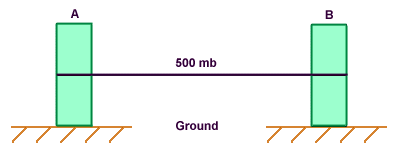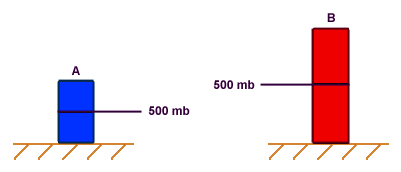|
|
. |
Pressure and Temperature
cold air contracts, warm air expands
The height of a given
pressure surface above the ground
varies with temperature. As an example, consider two identical columns
of air (A and B). Since they are identical, the 500 mb surface is found at the
same height in each column.

Cooling column A and heating column B changes the height
of the 500 mb
surface in each column. Since colder air contracts, the height of the 500 mb
surface in column A decreases, while in column B, the warm air expands,
raising the height of the 500 mb surface.

Therefore, where the temperatures are colder, a given pressure surface will
have a lower height than if the same pressure surface was located in
warmer air.
|

